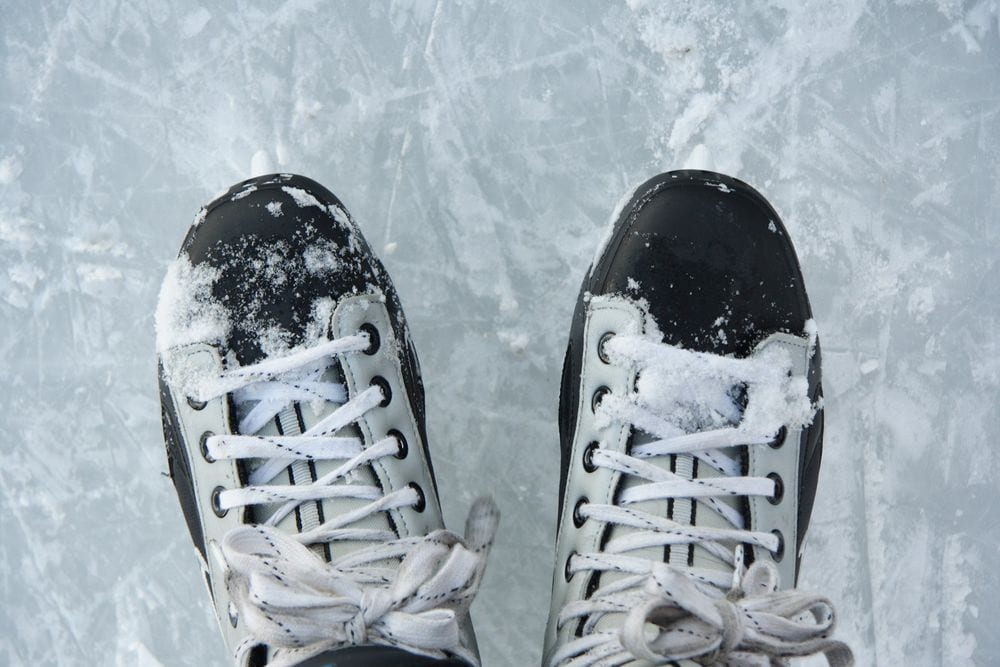In the ever-evolving world of hockey, a heated debate rages on: is roller hockey truly beneficial for ice hockey players? Many assert its merits as a cross-training opportunity, aiding in the maintenance of skating skills, balance, and muscle strength amidst limited access to ice time.
Renowned NHL players, including Connor McDavid, TJ Oshie, and Mitch Marner, have endorsed roller hockey as a valuable off-ice training tool.
However, it is crucial to grasp the disparities and limitations between these two sports. Let us delve into the intricacies and comparisons between roller hockey and ice hockey to gain a comprehensive understanding of their intricate relationship.
Benefits of Roller Hockey for Ice Hockey
Roller hockey provides several benefits for ice hockey players. It serves as an effective off-ice training tool, recommended by NHL players like Connor McDavid, TJ Oshie, and Mitch Marner. Maintaining skating skills is crucial for ice hockey players, and roller hockey allows them to continue practicing their skating technique. Roller hockey also helps to improve muscle strength, particularly in the legs, hips, and groin. This is important for ice hockey players, as strong muscles contribute to powerful strides and stability on the ice. Roller hockey serves as a valuable tool for ice hockey players to stay in shape and maintain their skills when access to ice time is limited.
Impact of Roller Hockey on Ice Game
How does roller hockey affect the skills and performance of ice hockey players?
- Maintaining ice hockey skills: Roller hockey can be a valuable tool for ice hockey players to maintain their skating abilities, balance, and muscle strength when ice time is unavailable. It provides a similar experience to ice hockey and allows players to continue training off the ice.
- Skill transfer from roller to ice hockey: Transitioning from roller to ice hockey is relatively easy for players who already have hockey sense and skills. Roller hockey helps develop important skills such as stickhandling, passing, and shooting, which can easily transfer to the ice game.
- Understanding the differences: Although roller hockey can be beneficial for ice hockey players, it is important to recognize that it is not a perfect substitute for ice hockey. The biggest difference lies in the stopping technique, which varies between roller hockey and ice hockey. Players must be aware of these differences and adjust their game accordingly when transitioning from roller to ice hockey.
Transitioning From Roller to Ice Hockey
Transitioning from roller hockey to ice hockey requires a thorough understanding of the key differences between the two sports. While roller hockey players already have a foundation of hockey sense and skills, there are some challenges to overcome.
The main learning curve lies in adapting to ice skates instead of roller blades. Players must prioritize skating on ice and focus on developing balance, tight turns, and stopping techniques specific to ice hockey.
Additionally, they need to familiarize themselves with the different rules of ice hockey, including player count, blue lines, and icing.
Role of Rollerblades in Ice Skating
Using rollerblades in ice skating can greatly enhance an individual’s ice skating ability and contribute to their overall proficiency in ice hockey. Here are three advantages of incorporating rollerblades in ice hockey training:
- Skill Improvement: Rollerblading allows players to practice and improve their ice skating skills during the off-season or when ice time is unavailable. It helps develop balance, agility, and muscle strength, which are essential for ice hockey.
- Individual Training: Rollerblades provide an opportunity for individual training without the need for specialized coaching. Players can work on their skating technique, turns, stops, and overall skating proficiency at their own pace.
- Similar Experience: Rollerblades offer a similar experience to ice skates, making the transition between the two smoother. The skills and muscle memory gained from rollerblading can be easily transferred to ice skating, aiding in the improvement of ice hockey skills.
Comparison Between Roller Hockey and Ice Hockey
Roller hockey and ice hockey share many similarities in gameplay and rules, with the primary distinction lying in the choice of footwear used by players. Here is a comparison of the gameplay, equipment, and rules between roller hockey and ice hockey:
| Roller Hockey | Ice Hockey | |
|---|---|---|
| Number of Skaters | 4 | 5 |
| Number of Goalies | 1 | 1 |
| Offside Rule | 2 zones | 3 zones |
| Type of Puck | Light plastic | Heavy rubber |
Advantages of roller hockey include its ability to maintain skating and balance when ice time is unavailable and its effectiveness as an off-ice training tool. However, roller hockey may not fully translate to the ice due to differences in stopping technique. Ice hockey, on the other hand, provides a more authentic game experience but requires access to ice rinks. Both sports have their advantages and disadvantages, and players can benefit from participating in both to enhance their skills and overall hockey development.
Ease of Ice Skating Vs. Rollerblading
Ice skating is generally considered more challenging than rollerblading due to the narrower surface area and increased pressure required to maintain balance on ice skate blades. However, rollerblading also has its advantages over ice skating.
Here are three benefits of rollerblading over ice skating:
- Stability: Rollerblades have a wider surface area that makes contact with the ground, providing more stability. The wider wheels of rollerblades reduce the pressure to maintain balance compared to ice skate blades.
- Easier Learning Curve: Starting from scratch, beginners may find rollerblading easier to learn than ice skating. The wider surface area and increased stability of rollerblades make it easier to find their balance and gain confidence.
- Versatility: Rollerblading can be done on various surfaces, including pavement, which makes it more accessible and convenient for practice. It allows individuals to improve their skating skills even when ice time is unavailable.
In roller hockey, the skills required include skating, stickhandling, shooting, and game awareness. Rollerblading can be a valuable tool for developing and maintaining these skills, making it a beneficial activity for those interested in playing roller hockey or ice hockey.
Frequently Asked Questions
What Are the Benefits of Playing Roller Hockey for Ice Hockey Players?
Playing roller hockey provides numerous benefits for ice hockey players. It helps maintain skating, balance, and muscle strength when ice time is unavailable. Rollerblades can also enhance ice skating skills during the off-season.
How Does Roller Hockey Impact an Ice Hockey Player’s Game?
Roller hockey can positively impact an ice hockey player’s game by maintaining skating skills, balance, and muscle strength. While roller hockey is not a perfect substitute for ice hockey, it can be a valuable cross-training tool. However, players must understand the differences, especially in stopping techniques.
What Are the Key Factors to Consider When Transitioning From Roller Hockey to Ice Hockey?
Factors to consider when transitioning from roller hockey to ice hockey include adapting to ice skates, prioritizing ice skating skills, learning ice hockey rules, and adjusting to the differences in stopping technique.
How Can Rollerblades Improve Ice Skating Ability?
Rollerblades can enhance ice skating ability by providing a similar experience to ice skates. They can help improve balance, agility, and overall skating skills, making them beneficial for ice hockey players looking to maintain and develop their on-ice performance.
What Are the Main Differences Between Roller Hockey and Ice Hockey?
The main differences between roller hockey and ice hockey lie in the footwear and equipment used. Roller hockey is played with rollerblades, while ice hockey is played with ice skates. Additionally, roller hockey typically has four skaters and one goalie, while ice hockey has five skaters and one goalie.
Conclusion
In conclusion, roller hockey can be a beneficial cross-training opportunity for ice hockey players, helping to maintain skating skills and muscle strength.
While there are differences between the two sports, such as the stopping technique, transitioning from roller to ice hockey is relatively straightforward.
Additionally, the use of rollerblades can enhance ice skating ability.
Overall, understanding the comparisons and nuances between roller hockey and ice hockey can provide a comprehensive understanding of the relationship between the two sports, allowing players to maximize their skills in both disciplines.









